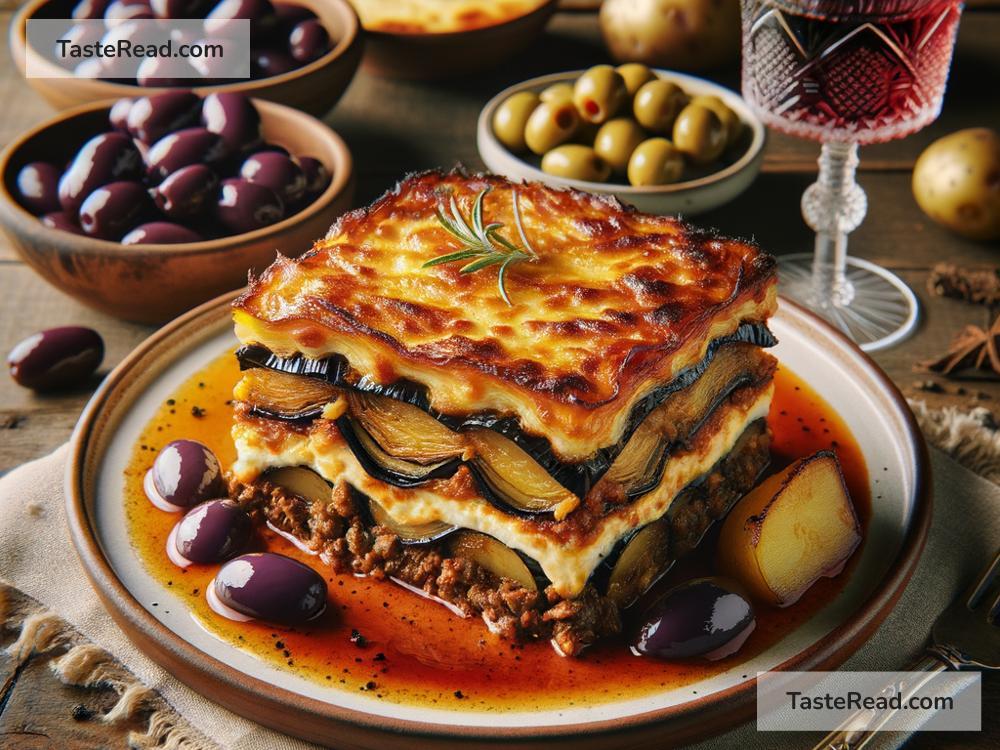Discovering the Delicious Layers of Greek Moussaka: A Culinary Journey Through Time
Picture a dish so beloved that it carries centuries of history, culture, and flavor in each layer. That dish is moussaka, a cornerstone of Greek cuisine. This hearty, layered casserole has tantalized taste buds and sparked curiosity about its origins for generations. Today, let’s explore the rich history of Greek moussaka in a journey that takes us from ancient times to the modern kitchen.
The Roots of Moussaka
Moussaka’s story begins in the culinary melting pot of the Eastern Mediterranean and the Middle East. Before it became a Greek staple, versions of the dish were savored across the region. The word “moussaka” itself stems from the Arabic word “musakhkhan,” meaning “that which is fed liquid.” This reference to the dish’s juicy, succulent nature hints at its ancient origins.
In its earliest form, moussaka was quite different from the version we know and love today. It likely included layers of meat and possibly vegetables, but not in the structured manner we’re accustomed to. There was no béchamel sauce crowning the top, and the use of eggplants, now a signature ingredient, was not yet widespread in the region.
The introduction of the New World crops, including tomatoes and potatoes, in the 16th century brought significant changes to moussaka’s recipe. However, it wasn’t until the early 20th century that the dish began to take on its modern form.
The Greek Moussaka We Know Today
The transformation of moussaka into a quintessentially Greek dish is credited largely to Nikólaos Tselementés, a celebrated Greek chef of the early 20th century. Tselementés is often referred to as the father of modern Greek cuisine, and his influence on moussaka is one of his most enduring legacies.
In his quest to refine Greek cooking, Tselementés introduced the idea of layering fried eggplants, sautéed minced meat, and topping it all off with a creamy béchamel sauce. This version quickly gained popularity, becoming a symbol of Greek culinary identity.
The Layers of Greek Moussaka
To truly appreciate moussaka, one must understand its components. Each layer plays a crucial role in creating the dish’s complex flavors and textures:
- Eggplants: Thinly sliced and usually fried, eggplants add a rich, smoky foundation to the dish.
- Meat Sauce: Typically made with minced lamb or beef, onions, garlic, and tomatoes, seasoned with cinnamon and other herbs, this layer offers depth and heartiness.
- Potatoes: Some versions include a layer of sliced potatoes for added substance.
- Béchamel Sauce: The creamy, custard-like sauce made from butter, flour, milk, and nutmeg that’s poured over the top and baked to a golden-brown perfection.
Cooking and Enjoying Moussaka
Creating moussaka is a labor of love. It requires patience and care to prepare each layer, but the result is a comforting meal that’s perfect for gatherings. The dish is usually served warm, not hot, allowing the flavors to meld and the layers to set, making it easier to slice.
Moussaka is more than just food; it’s a celebration of Greek culture and history. Each bite tells a story of culinary evolution, of ingredients traveling across continents, and of a nation’s love for rich, flavorful food.
A Dish for All
Today, moussaka has traveled far beyond Greece, finding a place in kitchens and hearts worldwide. It’s adaptable; vegetarians can substitute lentils or mushrooms for the meat, and the vegetables can vary according to taste and availability. This flexibility has helped moussaka become a beloved dish in many cultures, each version a reflection of its own culinary traditions and history.
In Conclusion
The history of Greek moussaka is a testament to the power of culinary evolution. From its humble beginnings to its status as a beloved national dish, moussaka has endured and adapted, reflecting the changes in society and cuisine over centuries. It serves as a delicious reminder of Greece’s rich cultural heritage, a dish that embodies the essence of Greek hospitality and the joy of shared meals. So, next time you enjoy a slice of moussaka, remember the journey it has made through time to reach your plate, and savor each bite with a new appreciation for its storied past.


